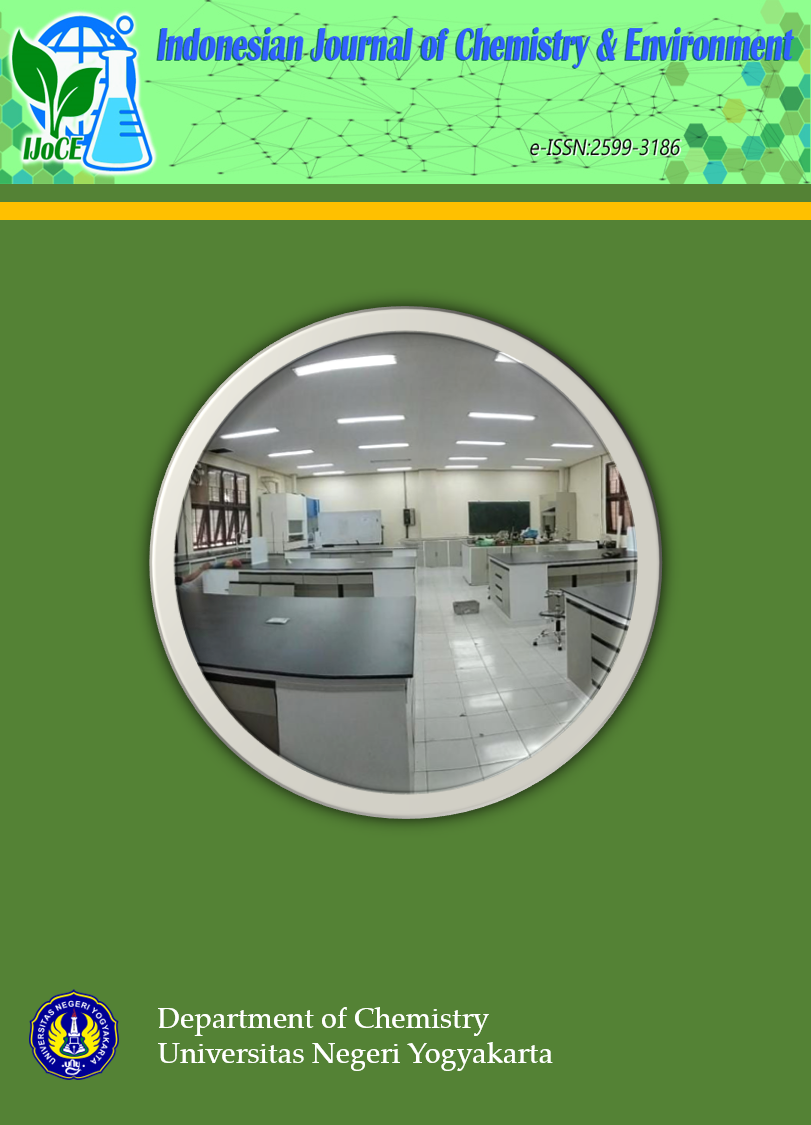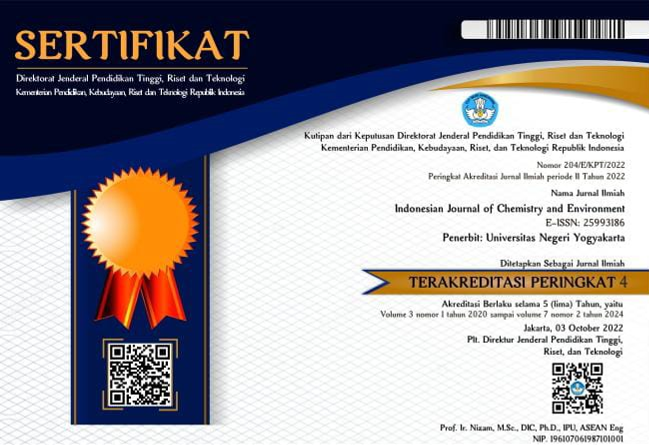Synthesis of ZnO Nanoparticles from Zink Acetate using Red Betel and Bay Leaves Extract and It's Application as Sunscreen
DOI:
https://doi.org/10.21831/ijoce.v4i1.45299Abstract
The ZnO nanoparticles have been synthesized using red betel and bay leaves extract and characterized to analyze the maximum wavelength, crystallinity, particle size, composition, and its activity as sunscreen. The synthesis of ZnO nanoparticles was carried out through reflux method using Zn(CH3COO)2. 2H2O red betel leaf as bioreductor. The same procedure was also applied by changing the betel leaf extract with bay leaf extract. The resulted materials were characterized by UV-Vis spectrophotometry, FTIR, PSA, XRD, and SEM EDX. The ZnO nanoparticles synthesized with red betel leaf have a maximum wavelength of 374.5 nm, wave number of 462.92 cm-1, particle size of 23.309 nm, 74.1% of Zn and 16% of O, SPF value of 8.047942. ZnO nanoparticles synthesized using bay leaf extract have a maximum wavelength of 374 nm, high crystallinity properties with a hexagonal crystal structure, an average particle size of 2.463 nm, 64.21% of Zn and 22.85%, and an SPF value of 2.886969. The activity test of ZnO nanoparticles as sunscreen showed that synthesis both using red betel and by leaves extract resulted in a good sunscreen activity test comparing with ZnO synthesized using ethanol as a control. Thus the synthesis of ZnO nanoparticles using natural extract is being a better way to use as a green synthesis that environmentally friendly.
Downloads
Published
2021-11-21
How to Cite
[1]
Theresih, K. et al. 2021. Synthesis of ZnO Nanoparticles from Zink Acetate using Red Betel and Bay Leaves Extract and It’s Application as Sunscreen. Indonesian Journal of Chemistry and Environment. 4, 1 (Nov. 2021), 31–38. DOI:https://doi.org/10.21831/ijoce.v4i1.45299.
Issue
Section
Articles
Citation Check
License
Authors who publish with this journal agree to the following terms:
- Authors retain copyright under a Creative Commons Attribution–ShareAlike License (CC BY SA) that allows others to share: copy, and redistribute the material in any medium or format, Adapt: remix, transform, and build upon the material, for any purpose, even commercially.
- Authors are able to enter into separate, additional contractual arrangements for the non-exclusive distribution of the journal's published version of the work (e.g., post it to an institutional repository or publish it in a book), with an acknowledgement of its initial publication in this journal.
- Authors are permitted and encouraged to post their work online (e.g., in institutional repositories or on their website) prior to and during the submission process, as it can lead to productive exchanges, as well as earlier and greater citation of published work.










